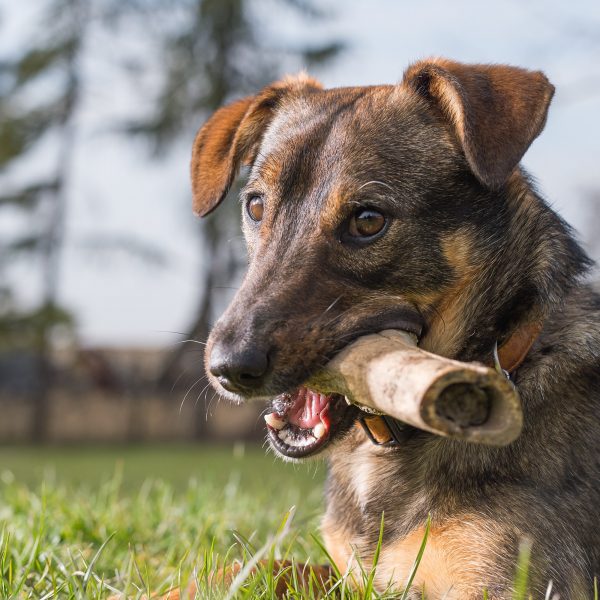Dog Bones: Which Chews Are Safe?
 It’s a natural instinct for dogs to chew, so it’s not surprising that they’ll chew on your shoes when given the chance. Dog owners often tide over the habit with different types of chew toys – typically bones. However, not all bones are created equal. Some are downright dangerous.
It’s a natural instinct for dogs to chew, so it’s not surprising that they’ll chew on your shoes when given the chance. Dog owners often tide over the habit with different types of chew toys – typically bones. However, not all bones are created equal. Some are downright dangerous.
Dog bones come in a variety of options, from all natural to nylon. Some bones on this list will be familiar while others will be brand new, and all will have intriguing details. Read on to discover the best, and the worst, types of bones to give your dog:
Bones You Should Not Give Your Dog
The following bones just aren’t safe enough to give to dogs. Whatever pros these bones have are heavily outweighed by their cons.
Animal Bones Advertised as “Bone Treats”
As the oldest and most ubiquitous of the dog bones, any list would be remiss to skip animal bones. Poultry bones are dangerous for dogs and you want to know what to do if your dog eats chicken bones in case they get into them. That being said, most dog owners know to stay far away from poultry bones, but what about pork and beef? They’re the genuine article, right?
Some people toss them to their pooch after cooking, while others buy commercial and seasoned. However, there is a large difference between the “bone treats” you see in the store and uncooked butcher-type bones. No matter how they’re prepared, animal bones that are advertised as “bone treats” in the store are often dangerous for consumption. So much so, that the FDA issued a warning about giving dogs these bone treats.
Cases have cropped up about dogs having difficulty with chewing their bones safely. Some dogs suffered from cuts in their mouth after bones splintered or shattered. Others swallowed shards of their bone while chewing – and ended up with pieces in their throats, stomachs, or intestines. They’ve needed surgery for removal, and some dogs have even died as a result.
Many animal bones aren’t safe for dogs and should be avoided at all costs. Anything specifically advertised for sale as a “bone treat” should be treated with caution. It’s also important to monitor your dog whenever they have a chew or a bone to ensure they remain safe and healthy.
Rawhide Bones
Many dog owners have migrated to giving their dogs rawhide bones as an alternative to real ones. Unfortunately, this option is also dangerous. Aside from being coated with ingredients like formaldehyde, arsenic, and bleach, rawhide bones present a choking hazard.
Dogs aggressively chew these bones, and when hunks rip off, dogs will often eat them. Sometimes the ripped pieces are too large for a dog’s throat and they will choke. Or, because the material doesn’t dissolve quickly, if it remains in the digestive tract, it may cause a blockage. These blockages can result in emergency surgery or even death.
At any rate, as dogs work the rawhide, it becomes soft. The gooey paste that remains offers little to no dental benefits.
Relatively Safe Bones to Give Your Dog
Nylon Bones
Nylon bones come in all different shapes and sizes and are generally extremely sturdy. They hold up against vigorous chewing, but only when the appropriate types are uses. For example, never give an adult dog a puppy Nylon bone – it may shatter.
These are classified as non-edible dog bones, and their materials aren’t intended for consumption. So if they shatter and a dog does consume them, then they must be taken to the veterinarian immediately. In some instances, the pieces will pass through, but surgery may become necessary in others.
Rubber Bones
Also classified as non-edible dog bones, rubber bones are another sturdy chew product. Dogs can spend hours gnawing on a rubber bone without any signs of wear. Only the most aggressive chewers can break off pieces of these.
If that is the case and the pieces are consumed, they must be taken to the veterinarian immediately. Aside from that, and containing trace amounts of BPA, rubber bones are mostly safe for dogs.
Keep an eye, or ear, on your dog while he chews his bone. If you see or hear anything out of the ordinary you’ll know if something isn’t quite right. Dogs can ferociously bite their toys, so it’s not surprising that some bones can’t stand the test of time – or teeth.
